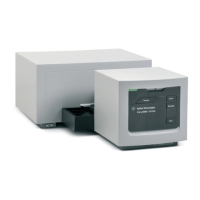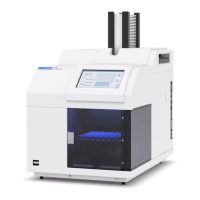50 Agilent 8453 UV-visible Spectroscopy System Operator’s Manual
3 Good Measurement Practices
General Considerations
Stirring and Temperature Control
Solution homogeneity can be a problem, especially for viscous solutions. There
are cases where, due to convection induced gradients, rapid absorbance
changes may give irreproducible data. These changes can be observed
spectroscopically by taking measurements with short integration times. To
minimize convection effects keep the temperature of your sample the same as
the cell holder or environmental temperature. Problems like these can also be
minimized by using a thermostattable cell holder and/or a stirring module.
A similar effect can occur in cases of incomplete mixing. This is especially true
where the specific gravities or miscibilities of the solvent and analyte are quite
different. Again, stirring is a way to prevent this kind of problem.
In an unstirred cell, it is sometimes possible to observe local photodegradation
of sensitive analytes. Because the actual volume of the sample in the light path
is very small, stirring the sample will reduce the time any given analyte
molecule is in the light path. This minimizes the photodegradation and
increases homogeneity. Using a flow cell with continuous flow can yield
similar results.
Checklist for Best Results
Cell:
✔ Cell is made of quartz or glass
✔ Apertured cells has black sides
✔ Apertured cells has an aperture greater than or equal to 3 mm
✔ Cell windows are free of fingerprints and other contamination
✔ Flow cell used instead of an apertured standard cell
Measurements:
✔ Solution in cell is free of floating particles
✔ Solution in cell and cell walls are free of bubbles
✔ Solution in cell is mixed homogeneously
✔ Blank measured on same solvent as sample

